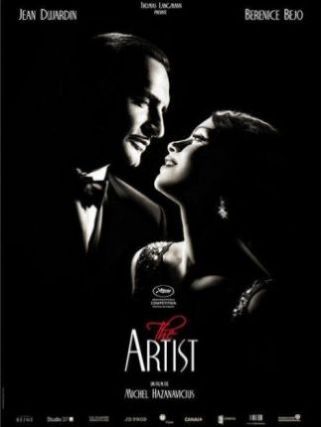
6/10
When men dress up as women in the movies, it is almost
always in a comedy or farce; think Some Like It Hot, The
Rocky Horror Picture Show, and Tootsie. However, when the situation is reversed and
the film concerns women dressing up as men, the movie is habitually a drama
bordering on tragedy: Yentl, Boys Don’t Cry, and Osama. Perhaps men trying to pass themselves off as
women are just funnier and more outlandish, but the reasons behind it are
usually not as urgent. In Albert
Nobbs, Albert (Glenn Close) is the head waiter at an upscale hotel in
19th century Ireland. He
appears to be middle-aged and has been passing himself off as a man since
he/she was 14. His livelihood and future
in the midst of immense unemployment and desperate surroundings depend on
maintaining this deception.
I use the pronouns ‘he’ and ‘his’ because nothing about
Albert is female except for the some well hidden physiology. Albert is extremely adept at passing as a
man. When he speaks at all, his voice is
low. His hair is short, he is impeccably
dressed, his manners are irreproachable, and he does nothing whatsoever to call
any attention to himself. As any
man-servant should be, he is invisible.
Working in the hospitality industry is just a means to end for Albert
though. He lives such a spartan
lifestyle because he hoards his money underneath his floorboard to one day soon
purchase a shop and become a respected tobacconist. He is close; he has identified the vacant
shop, has planned its layout, and can almost feel the escape which will come
when he is his own boss.
Albert knows something is missing in his grand scheme
though; he is lonely. In the beginning,
he does not recognize he is missing anything important until he is forced to
share his room one night with a man, Mr. Hubert Page (Janet McTeer). Through a contrived sequence, Albert is
revealed as a female to Mr. Page and only later on learns Mr. Page is also a
woman. Using what look like camera
tricks and perspective shots, Mr. Page is a towering and bulky workman. He is also married to a woman. This bit of news tremendously confuses poor
Albert. How is it possible for two women
to be married to one another? It is
obvious that Mr. Page and his wife are in a lesbian relationship; however,
Albert would not even know what that word means. Albert comes across as asexual. There has never been a chance in his life to
conceive of intimacy so all feelings and aspects of that persona just atrophied
away.
Now that Albert’s eyes are opened to the fact that there are
women out in the world who are married to each other, he sets his eyes on the
lowly but young and desirable chambermaid Helen (Mia Wasikowska). Helen knows just how pretty she is and
becomes smitten by the newly employed handyman Joe (Aaron Johnson). Not only is Albert stunted in the intimacy
realm of life, but his social skills are also not as fine tuned as the younger
set who now aware of Albert’s infatuation with Helen, may try to use those
feelings for their financial gain.
While the story of Albert Nobbs is on the weaker side and
not particularly engaging, the acting, specifically by Close and McTeer, is
fascinating. There is a scene where
Albert and Mr. Page try on some dresses and take a walk outside. For Albert, this is the first time he has
worn a dress in probably 30 years. The
immediate discomfort but growing acceptance and then utter joy on his face is a
wonderful scene as he experiences some long repressed feelings while
ecstatically running on the beach.
McTeer’s performance is equal to Close’s in every way. She/he looks 100% like a man dressed up as a
woman when he puts on that dress. The
makeup department for this film is spot on, much better than J.
Edgar and The Iron Lady. Even
though they did not have to age the characters as those aforementioned films
did, transforming two women into men so effectively as they do is worth the
price of admission alone.
Director Rodrigo Garcia, who happens to be the son of novelist
Gabriel Garcia Marquez, is becoming known as the go-to filmmaker for involved
and complex stories about women. He also
directed Things You Can Tell Just by Looking at Her, Nine
Lives, and Mother and Child, all recognized as thoughtful films with
strong female leads. Glenn Close
co-wrote the screenplay and brought with her a long experience of understanding
Albert since she played him in the 1982 stage production.
I recommend Albert Nobbs to enjoy the
performances and to witness the forceful presences of Glenn Close and Janet
McTeer and their convincing portrayals of the opposite sex. The story is not as compelling as one would
wish for a period piece such as this, but it is nevertheless overshadowed by
the acting.







